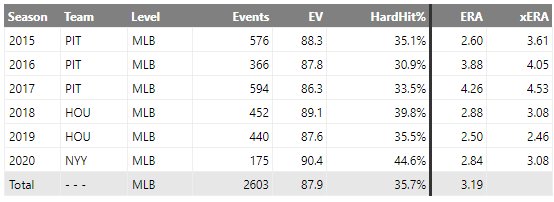2021 Positional Power Rankings: Bullpen (No. 1-15)
Earlier today, Eric Longenhagen previewed baseball’s lesser bullpens. Now, Dan Szymborski takes a look at the relief corps projected to be the league’s best.

Over the last 10 to 15 years, there have been gradual changes to how bullpens are built and deployed. Clubs are more willing than ever to admit that their closer is simply the best pitcher on their roster rather than one blessed with magical abilities, able to secure the final outs of a game where lesser men would fail. Closers are still a fairly big deal, mind you, but the trend of late has been to talk more about bullpens in terms of the entire unit, rather than just the closer and his backing band. As such, that’s how we rank them. There’s not a lot of turnover this year, with 11 of the top 15 teams from last season returning.
It will be interesting to see what effects the shortened 2020 season has on bullpen usage in 2021. By the time we get to October, it will have been two years since any pitcher threw 200 innings, and teams are likely going to protect their starters more than usual this season. Nobody really knows what the long-term effects will be of throwing pitchers into a 162-game marathon after a weird, shortened sprint season, one that featured two spring trainings set three months apart. Tommy John surgery may have a high success rate these days, but that doesn’t mean anyone wants to flirt with it.
We sometimes pooh-pooh the value of bullpens because of their volatility, but the fact is, the share of innings thrown by relievers has steadily increased over the last half-century, with their proportion of innings going from just over a quarter in the mid-70s to nearly half last year.

Forty-four percent of innings in 2020 were thrown by relievers and there’s no reason to expect a sudden reversal in 2021. It’s not outside the realm of possibility that 20 years from now, there’s no actual distinction between starters and relievers, with those classifications largely considered a relic. That’s still speculative, but for now, even if a reliever can’t match the value of a Jacob deGrom, bullpens have a very real effect on who makes the playoffs and who pops bubbly in late October. Read the rest of this entry »





